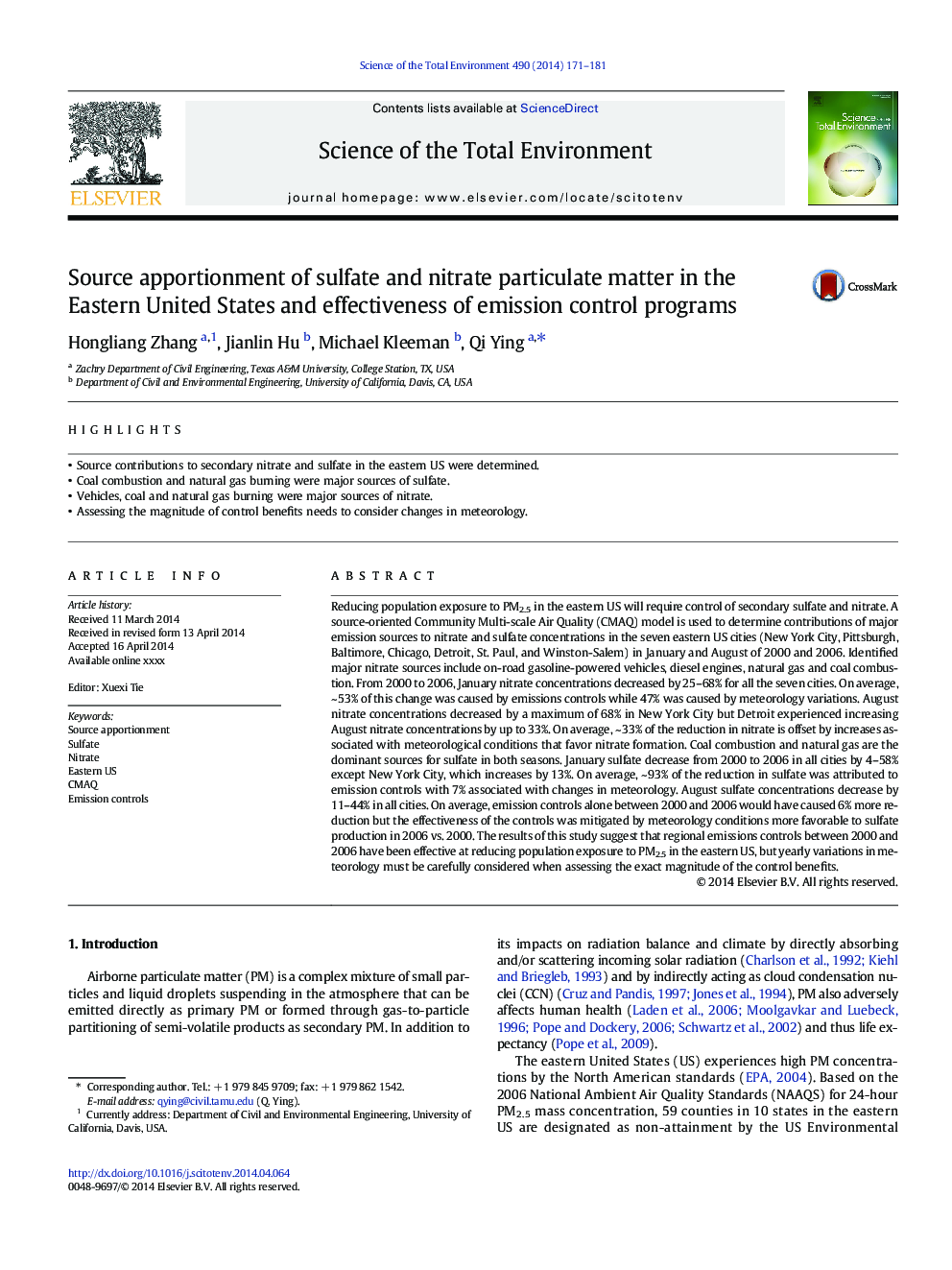| کد مقاله | کد نشریه | سال انتشار | مقاله انگلیسی | نسخه تمام متن |
|---|---|---|---|---|
| 6329019 | 1619780 | 2014 | 11 صفحه PDF | دانلود رایگان |
عنوان انگلیسی مقاله ISI
Source apportionment of sulfate and nitrate particulate matter in the Eastern United States and effectiveness of emission control programs
ترجمه فارسی عنوان
تقسیم بندی منابع ذرات سولفات و نیترات در ایالات متحده آمریکا و اثربخشی برنامه های کنترل انتشار
دانلود مقاله + سفارش ترجمه
دانلود مقاله ISI انگلیسی
رایگان برای ایرانیان
کلمات کلیدی
موضوعات مرتبط
علوم زیستی و بیوفناوری
علوم محیط زیست
شیمی زیست محیطی
چکیده انگلیسی
Reducing population exposure to PM2.5 in the eastern US will require control of secondary sulfate and nitrate. A source-oriented Community Multi-scale Air Quality (CMAQ) model is used to determine contributions of major emission sources to nitrate and sulfate concentrations in the seven eastern US cities (New York City, Pittsburgh, Baltimore, Chicago, Detroit, St. Paul, and Winston-Salem) in January and August of 2000 and 2006. Identified major nitrate sources include on-road gasoline-powered vehicles, diesel engines, natural gas and coal combustion. From 2000 to 2006, January nitrate concentrations decreased by 25-68% for all the seven cities. On average, ~Â 53% of this change was caused by emissions controls while 47% was caused by meteorology variations. August nitrate concentrations decreased by a maximum of 68% in New York City but Detroit experienced increasing August nitrate concentrations by up to 33%. On average, ~Â 33% of the reduction in nitrate is offset by increases associated with meteorological conditions that favor nitrate formation. Coal combustion and natural gas are the dominant sources for sulfate in both seasons. January sulfate decrease from 2000 to 2006 in all cities by 4-58% except New York City, which increases by 13%. On average, ~Â 93% of the reduction in sulfate was attributed to emission controls with 7% associated with changes in meteorology. August sulfate concentrations decrease by 11-44% in all cities. On average, emission controls alone between 2000 and 2006 would have caused 6% more reduction but the effectiveness of the controls was mitigated by meteorology conditions more favorable to sulfate production in 2006 vs. 2000. The results of this study suggest that regional emissions controls between 2000 and 2006 have been effective at reducing population exposure to PM2.5 in the eastern US, but yearly variations in meteorology must be carefully considered when assessing the exact magnitude of the control benefits.
ناشر
Database: Elsevier - ScienceDirect (ساینس دایرکت)
Journal: Science of The Total Environment - Volume 490, 15 August 2014, Pages 171-181
Journal: Science of The Total Environment - Volume 490, 15 August 2014, Pages 171-181
نویسندگان
Hongliang Zhang, Jianlin Hu, Michael Kleeman, Qi Ying,
